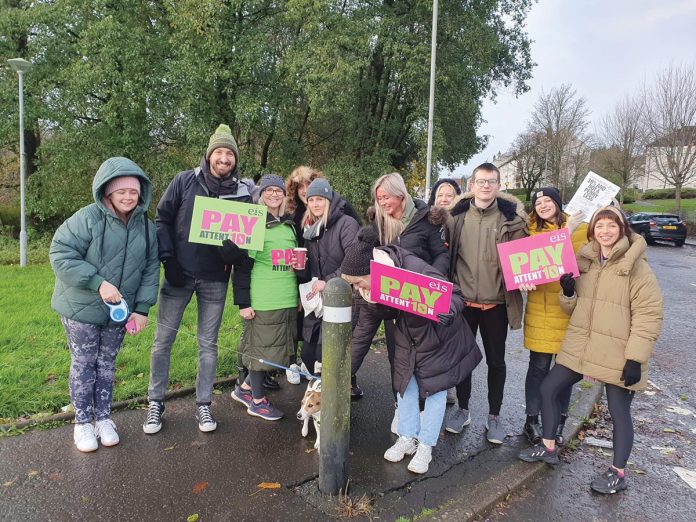Socialist Party Scotland reporters
Scottish teachers in the Educational Institute of Scotland (EIS) union staged a massive, successful strike on 24 November. Every single primary and secondary school across Scotland was closed, with the exception of a handful of primary schools on Orkney and Shetland. Significant numbers of council-run nurseries were also shut.
There were hundreds of EIS picket lines across the country and major strike rallies in six cities.
As Socialist Party Scotland member and EIS West Dumbartonshire local association secretary Jim Halfpenny commented: “Today saw the biggest strike by teachers in 40 years because we have had enough. Our demand for a 10% wage increase has been treated with disdain by [Scottish local government authority] Cosla, and the Scottish government.
“The latest offer from the employers is an insult. We worked through the pandemic to maintain education. Workload remains excessive while more and more is demanded, with fewer and fewer resources. In response, teachers are offered a derisory pay increase which is nothing short of a substantial pay cut. This cannot be allowed to continue.”
Pamela Manley, an EIS rep from Angus, told us: “Why are we on strike? It’s simple; our working conditions are children’s learning conditions.”
The size of the education shutdown reflected the huge wave of anger among teachers. Indeed, this is the first national strike among teachers over pay since the mid-1980s.
The EIS organises 80% of Scottish teachers, a large majority are women, and the scale of the mobilisation reflected the determination of tens of thousands of members to hit back on deteriorating pay, workload and anger at the employers.
The Scottish government rubbed salt in the wounds just two days before the strike by effectively offering the same 5% rise that had been rejected by all teaching unions in September.
Shirley-Anne Sommerville, the SNP education secretary, blurted out the real views of the government when she said: “This is now the fourth offer that has been made. In the same time EIS have not changed their request for a 10% pay increase – even for those on the highest incomes.”
In truth the four offers were 2%, 3,5%, 5% and, on the eve of the strike, a paltry offer for the lowest but 5% for the vast majority . Why should the EIS change their request for 10% with RPI inflation at 14% and rising?
As they have with NHS workers, the SNP sought to blame the unions for cuts in budgets. “The financial situation for the Scottish Government is challenging and additional money for teacher pay means reduced public services elsewhere.”
In truth, the Scottish government has passed on every penny of Tory austerity to public services in Scotland. And it is that reality, of continual acceptance of cuts, which has brought the Scottish government into head-on collision with the trade union movement. Further EIS strikes have been announced for 10-11 January and more dates will be announced. The SSTA, a smaller teachers’ union, has also announced strike action for early December.








